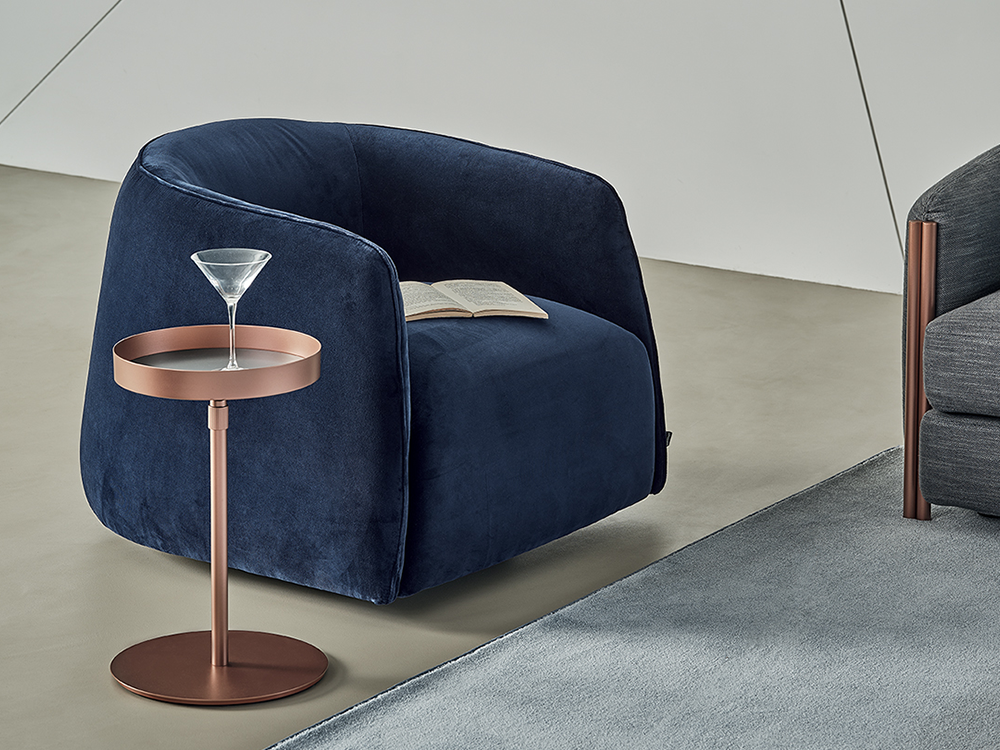To approach the world of pendant lamps, one has to start by making a distinction: pendant lamps are often confused with chandeliers. Instead, they are two separate categories, albeit within the same sector: lighting.
To approach the world of pendant lamps, one has to start by making a distinction: pendant lamps are often confused with chandeliers. Instead, they are two separate categories, albeit within the same sector: lighting. Lamps have only one thing in common with chandeliers: they are also hung from the ceiling, but unlike chandeliers they are hardly ever used as the main light. Pendant lamps are usually combined with floor lamps. And they often feature designer lampshades.
The chandelier on the other hand has the main purpose of illuminating the room, decorating the ceiling. It differs from lamps mainly in its ability to provide complete illumination. Another difference: once it has been installed, it is rare to remove it due to the cumbersome and unwieldy uninstallation manoeuvres it requires.
Pendant lamps: how to choose the right one
Furnishing trends in recent years have shown significant growth in the production of pendant lamps, which increasingly meet the taste of broad target groups. Often, these are lamps made of natural and simple materials such as wood, fabric and glass. Particularly sought-after are pendant lamps with a minimalist design, without excessive decoration.
Before choosing a pendant lamp, it is important to study the available space and quantify the lighting effect you want to create. After this priority skimming, the design is assessed in purely aesthetic terms, opting for the model that best matches the rest of the environment. In this respect, the model stands out for the originality of its design and the quality of its realisation, Spark by Bontempi Casa. This is a lamp consisting of one to six pendants with a ceiling rose, a natural brass frame and borosilicate glass , and a pendant lamp for cluster compositions – to be combined with the multiple ceiling rose to be ordered separately – with a natural brass frame and borosilicate glass decentretiser.

Modern pendant lamps for furnishing the kitchen
The versatility of this type of furnishing accessory is highlighted by the diversified use that can be made of it: while initially pendant lamps were especially suitable for living rooms and living areas, they have now become a must for kitchens, especially those of modern inspiration. Very often these are glass models: glass pendant kitchen lamps allow you to play with opacity and transparency. Plastic ones, on the other hand, allow for a lot of brightness and can have traditional shapes, such as spheres. There are also models made of wood, paper, natural stone, aluminium, rubber and increasingly used today is fabric. The kitchen is a place that welcomes, that accommodates, that brings people together, it must therefore be well lit. And pendant lamps give you the possibility to create a cone of light wherever you like: on the table, on the worktop, on the hob.
There are pendant lamps for the kitchen in various styles:
Classic style kitchen pendants: a model that never goes out of fashion, it can be Art Nouveau with plain glass and floral decorations, or vintage, with soft lines and no decorations.
Rustic or industrial style kitchen pendants: a model with an iron or steel bell, dark on the outside and light on the inside.
Modern kitchen pendant: a model that experiments with special shapes, but above all in materials such as perforated plastic, bent steel or glass.
Everything you need to know about designer pendant lamps
Designer pendant lamps often feature an industrial-style metal frame. This is a very specific choice: the strong visual impact comes in a variety of types and finishes, defining the style and making metal lamps easily adaptable to modern as well as classic environments. An exemplary model of designer pendant lamp by Bontempi is Pandorawith lacquered rosette and body in the various finishes available.
Many designer pendant lamps are perfect for illuminating the office work surface and – being largely adjustable – allow accent lighting on specific objects or portions of space.
Finally, the topic of energy saving is worth mentioning: most designer pendant lamps are combined with LED bulbs. From this, comes the possibility of a significant step forward in the fight against waste: LEDs use 90 per cent less energy than conventional incandescent lamps.











